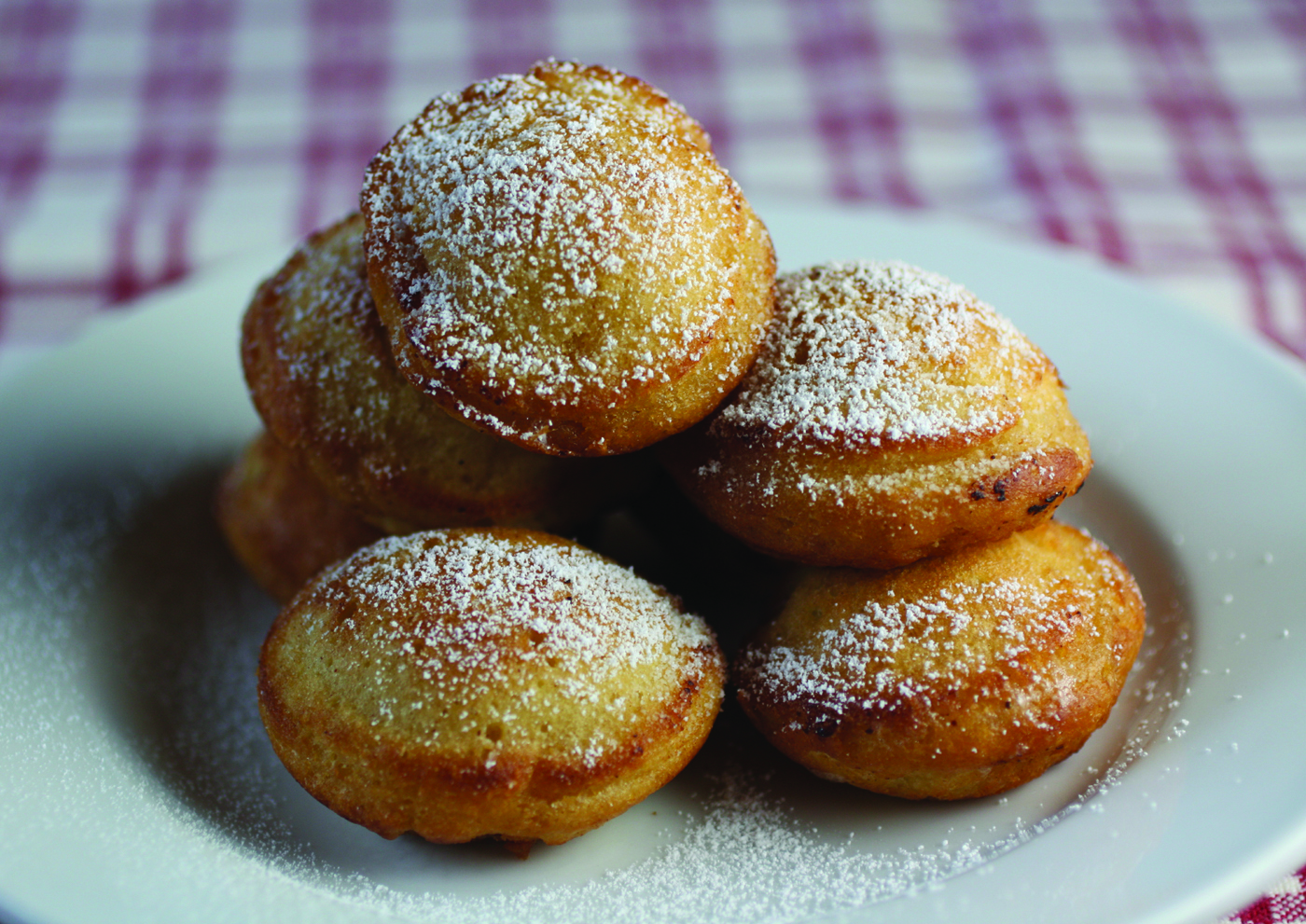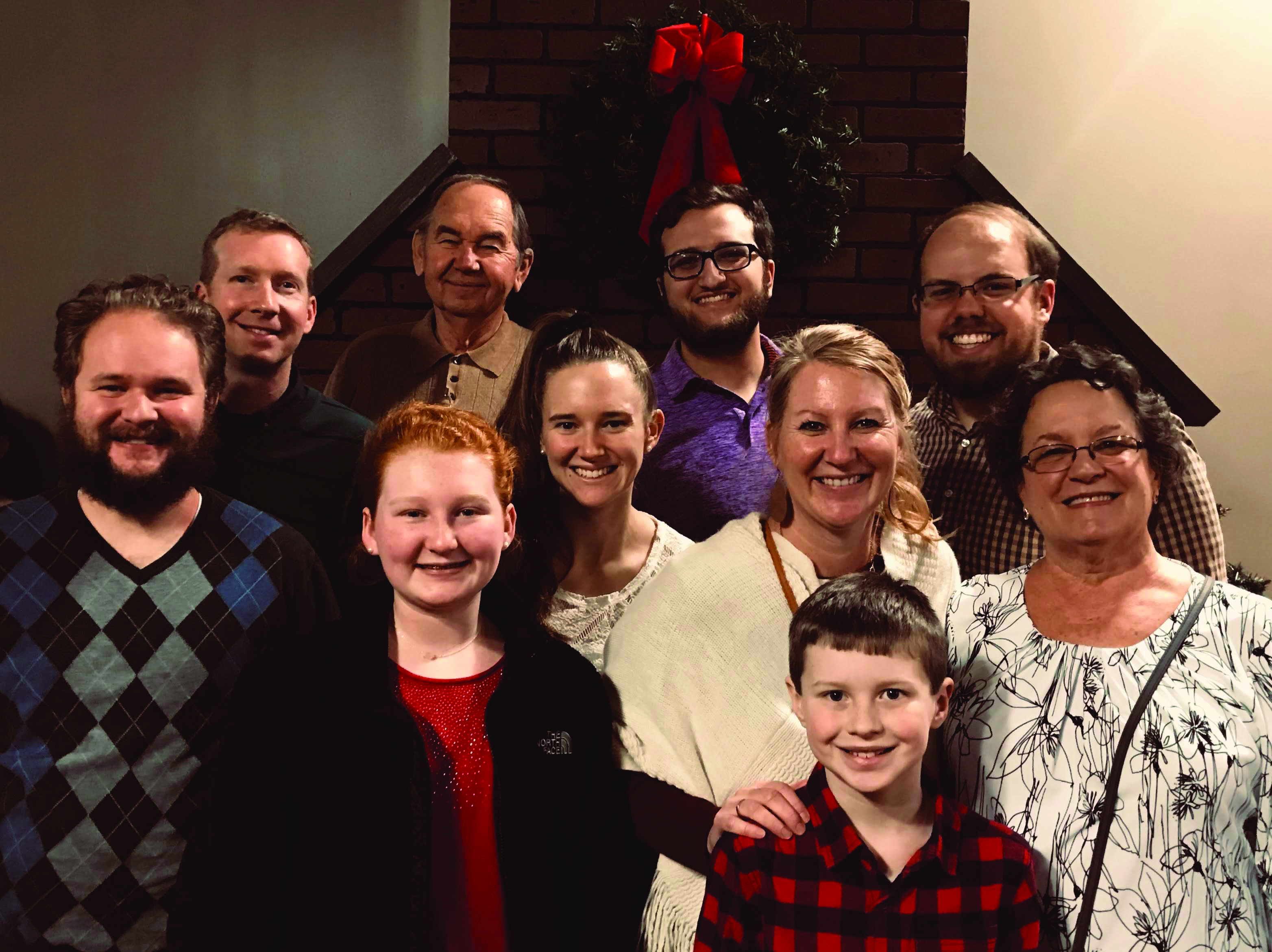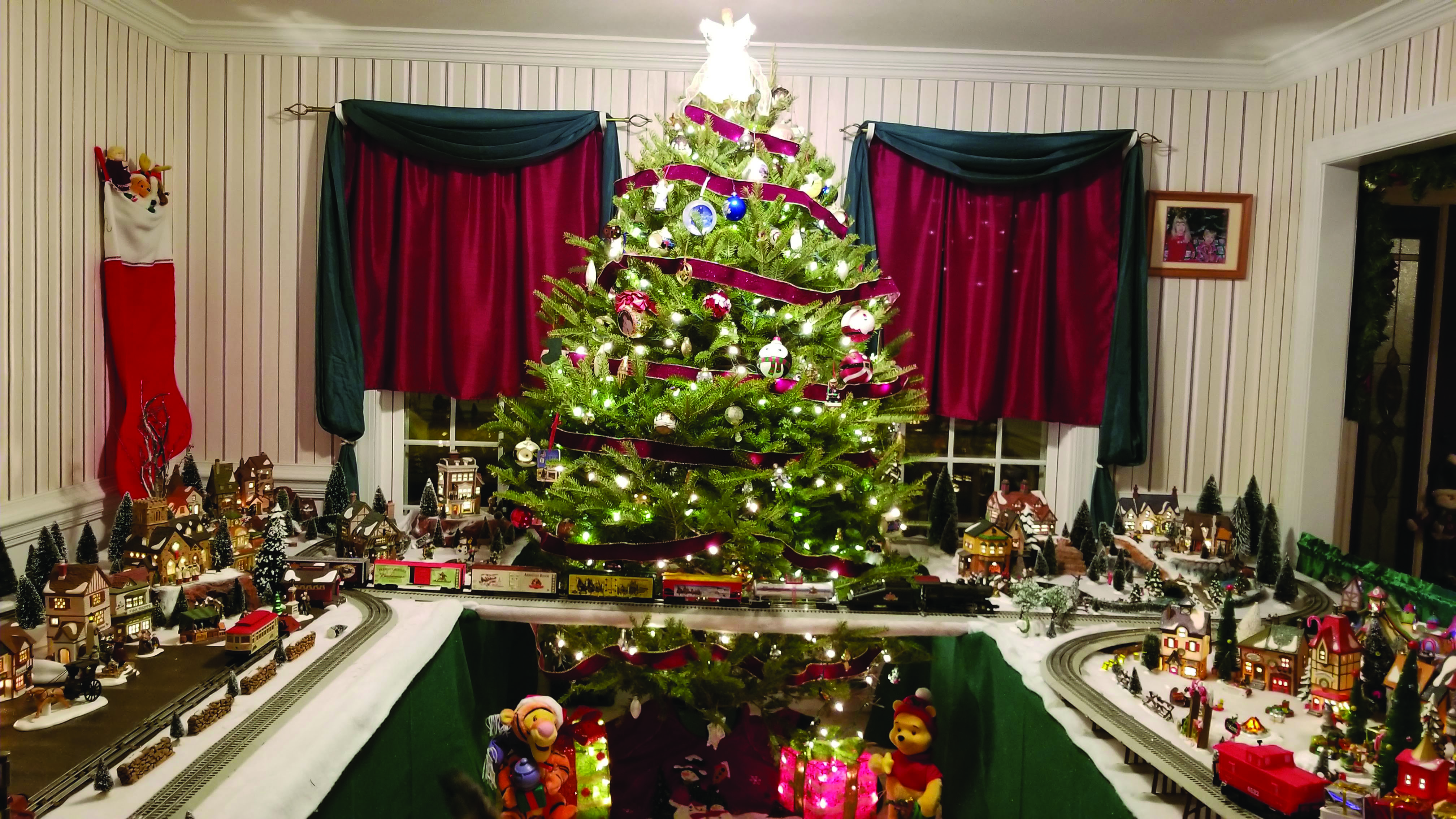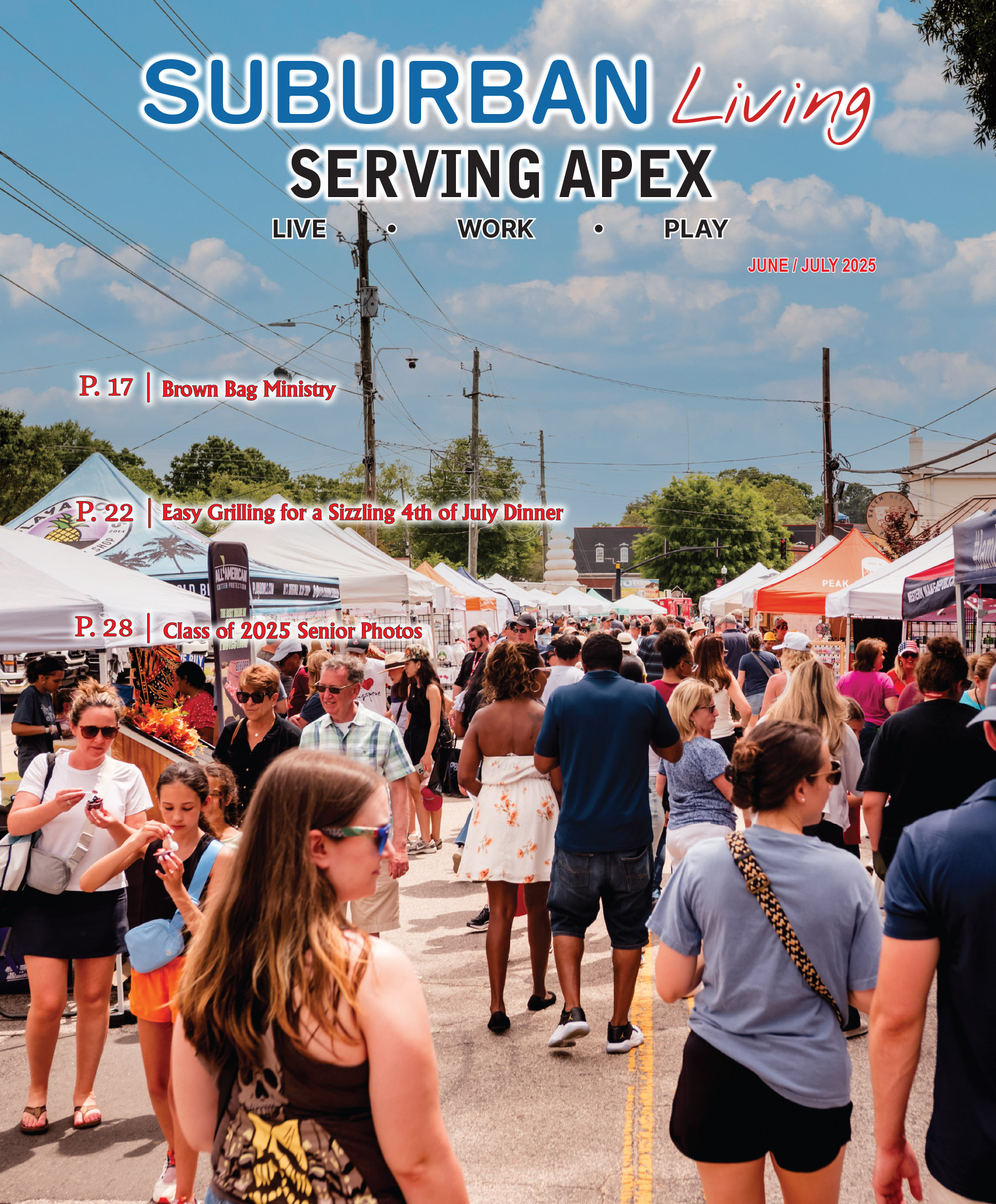Traditions are the customs that stand the test of time and survive from generation to generation. Every culture has them. They can be unique to one’s ethnicity, religion, geographic location, and heritage, or simply a delightful practice started in the past and enjoyed to the extent that it is still looked forward to with anticipation today.
We asked Suburban Living readers to share stories about their favorite December and January traditions.
Stained Glass Candy From Theresa Krogh
Stained Glass Candy is a beautiful mix of homemade hard candies of many flavors, hand-cracked and mixed so that it looks like shattered pieces of stained glass.
My Grandma Percival began making Stained Glass Candy at Christmastime in 1969. Give or take a year. (Nobody can remember for sure, so I go with 1969.) A precious bag of it was always included in the box of Christmas presents sent to our house from Grandma’s house in Iowa. Every year, without fail, it was just as much a part of Christmas as decorating the tree and hanging stockings up for Santa.
My Aunt Jan Percival started making the candy, and she and my grandma would spend Thanksgiving weekend together making over a dozen batches of different flavors. Jan, however, was the only one of her siblings to make it. In 1994, when I was 25 years old, I spent Thanksgiving with Grandma and Jan and they taught me. I am the only one in my generation who learned how. Thankfully, I have two sons and a niece who want to (eventually!) learn the family tradition.
The process takes 2-3 days. Each batch is cooked on the stovetop to 295 degrees and then quickly poured onto a cookie sheet. After it hardens, it is cracked into edible sized pieces with the handle of a table knife and sprinkled with a little bit of powdered sugar to keep it from sticking together (but not so much that it dulls the sparkle of the candy!). Then the flavors are mixed and put into individual bags for gift giving. Depending on the year, there are between 12 and 15 different flavors. There are a few special people who get a separate batch of the Triple X Cinnamon flavor. It’s a bit too strong to include with the other flavors. I have to cover my mouth and nose, wear gloves, and open the windows when I make that batch!
Traditionally, I make about 100 bags to deliver to family, friends, neighbors, coworkers, and teachers. I always put a few bags in my purse to hand out to folks working the stores on Christmas Eve day as a “thank you.” That is the best part about the candy and the tradition. Giving it away. There is nothing like seeing eyes light up when I give a bag to someone who has been looking forward to it since last year. I know which families need a little extra of a certain flavor. I make sure one family always gets their bag before they begin their road trip to their parents’ house because I’ve been told they dole it out to everyone in the car during the 10-hour drive.
Believe me, it’s not always the actual making of the candy that I like. Some years I’ve been so worn out, especially emotionally, that I have thought to myself, “Not this year. I just can’t do it this year.” But then I would think about people’s faces when I would have to tell them that I didn’t make candy, and I pressed on. Those years are especially rewarding for me. There is nothing like giving to others and seeing them get happy over a silly little bag of candy, to pull you out of a funk.
This Christmas will be the 51st year of this special Stained Glass Candy tradition and seeing the joy on people’s faces.
Æbelskivers for the New Year From Theresa Krogh
Æbelskivers are a Danish family tradition. My great-great grandmother came to the US from Denmark in the late 1800s. I’m assuming someone has been making them ever since. My Grandma Hall would make them for her children and grandchildren at Christmastime when we were all together.
I describe them as a combination of a pancake and a donut. They are made from a yeast dough which has cardamom in it. They are cooked on the stovetop in an Æbelskiver pan, which is traditionally cast iron. The pan has half spheres in it where you pour the dough. You turn them with a fork as they cook in oil so that they make a round ball. They are then dipped in sugar and eaten. Growing up, we would have contests to see how many we could eat. My brother ate 17 once, but my record is only 12.
Once I had children and a house of my own, I began making æbelskivers on the first Saturday of the new year and inviting friends and their families over for a feast. Other finger foods were provided, but the main event was Æbelskivers! I have three pans so I would stand at the stove with my mom and usually my friend Doug. We would spend an hour or so pouring dough and turning Æbelskivers while people ate and enjoyed. There were always plenty for us once we were done turning them out. We would cram about 40 people in our little house for this tradition, with kids playing everywhere and adults chatting it up in whatever corners they could find. They were crazy-crowded, noise-filled, overflowing-with-laughter-and-friendship kinds of gatherings. I used to do this every January, but only every few years now. If we don’t have the big party, we still manage to make them for ourselves to enjoy. It’s never quite the same that way, though. Æbelskivers, like Stained Glass Candy, are meant for lots of people and lots of love.
A Birthday Party for Jesus From Suzan Sudlow
When our kids, Abby and Adam, were really young, Dan and I realized they knew a lot more about Santa than they did about Jesus’ birth with regards to Christmas. We started a tradition very early on, that after church on Christmas Eve we would come home, share a meal, and talk about Jesus’ birth. After dinner, we have a legitimate birthday party for Jesus. The kids help make the cake, we put real candles on it, and we sit around the dining room table and sing Happy Birthday to Jesus, with just as much enthusiasm as for any other family member’s birthday. We try and keep the candles to about 10 and after one of the kids blows them out, we serve up cake and ice cream. We taught them that the presents under the tree symbolize God’s gift to the world, and that we would wait to open them until the morning, like the whole world had to wait for the greatest gift the world has ever received—JESUS!
Lasagna for Christmas Dinner From Kelly Jaynes
F
or as long as I can remember, our Christmas dinner has been lasagna. The recipe has been passed down from Anna Cappiello, my paternal grandmother. The recipe makes enough lasagna to feed a small army. Over the years, no one has bothered to scale the recipe down, instead we just keep up my grandmother’s tradition. We share our extra pans of lasagna with friends and neighbors.
The lasagna itself is delicious! What I love most is the time I always got to spend with my dad. The process takes a good two to three days. Dad and I would do so much talking while we cooked. I learned all about my grandparents and about the times when my dad was growing up. We started to include my children, Matthew and Hope, in the cooking tradition when they were just a few years old. They got a kick out of hearing stories about my brothers and me. My dad passed away in 2017. We have since pulled my older brother into our cooking tradition. I love that my children know the recipe almost as well as me. I know my dad and his mom will be happy that the tradition will continue for many more years!
Our Christmas Village From MaryAnn and Bob Gunshefski
Childhood memories for MaryAnn Gunshefski include her dad’s love of model trains. Her husband Bob’s childhood memories include the village under his grandmother’s Christmas tree. In 1992, during the early years of their marriage, MaryAnn and Bob decided to start their own Christmas village tradition. It started with four houses, a couple of figurines from the Department 56 Dickens Village Collection, and a train set from MaryAnn’s childhood, all under the tree. More village pieces were received as gifts, and the set grew.
In addition to MaryAnn’s dad, Bob’s step-dad also loved trains. When Bob and MaryAnn’s children, Michelle and Bobby, were young, Bob’s step-dad gave each of them their own train set. Over the years, the kids become attached to, then involved with, the Christmas village. They have added their train sets to the tradition. As the village grew in size, it was elevated to table height, to keep the dog from trudging through it.
The collection continued to grow and in 2013 became part of a Christmas room! Every November, we transform the room off the living room into a Christmas wonderland, complete with a decorated Christmas tree, 4 villages, and 3 trains. The wonderland is enjoyed by the family, including Bob’s mom who now visits each December, and MaryAnn’s mom, who lives here in Cary. It is also shared with the younger neighborhood children, which is the best—it renews the joy of the holidays and makes all the effort worth the work.
Though MaryAnn’s dad (Grandpa Rich), Bob’s step-dad (Grandpa John) and grandmother (Great-Grandma G.) are no longer with us, their love of trains and villages is alive and well with their grandchildren.













